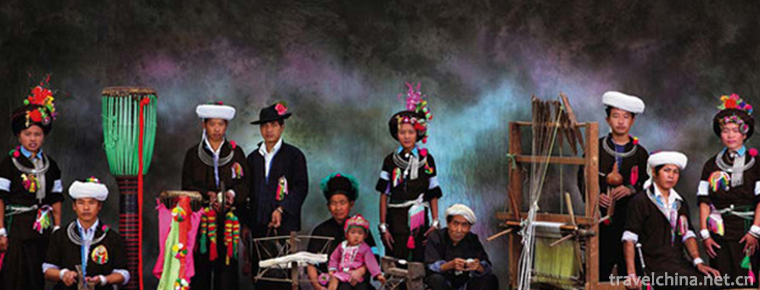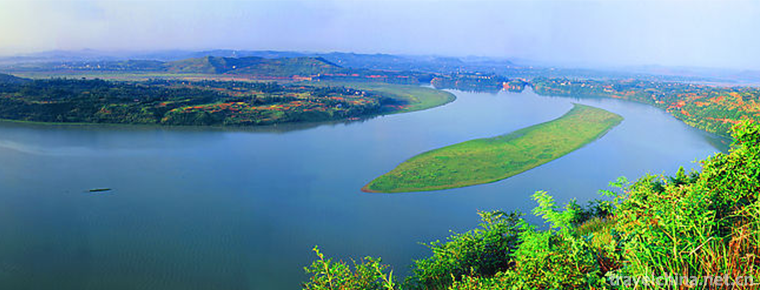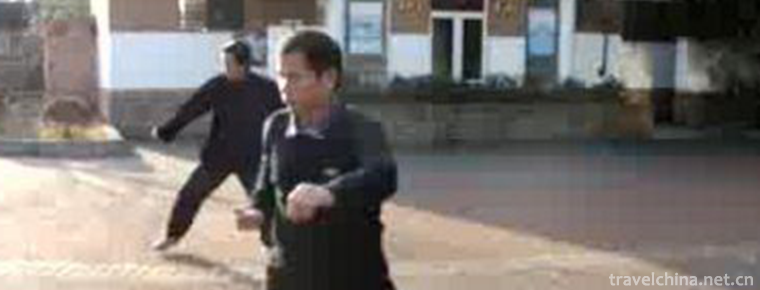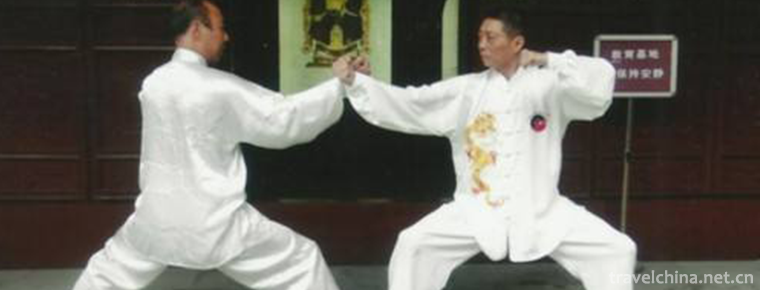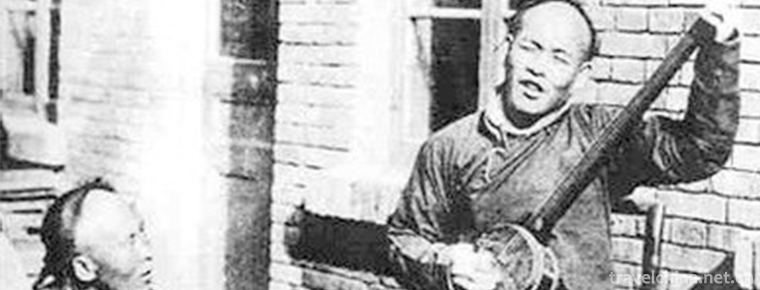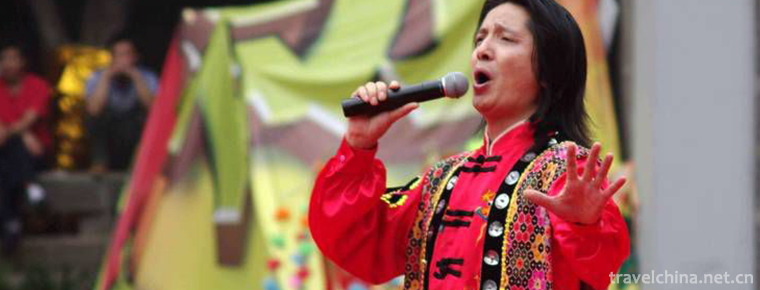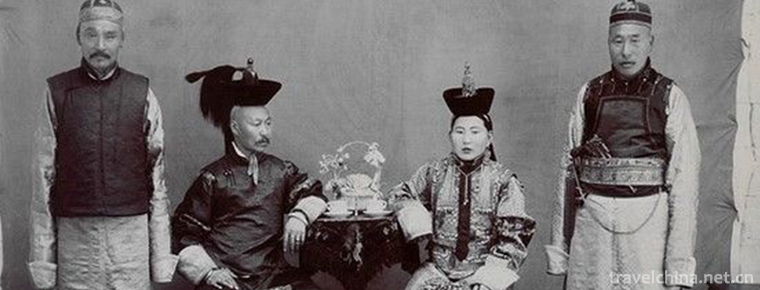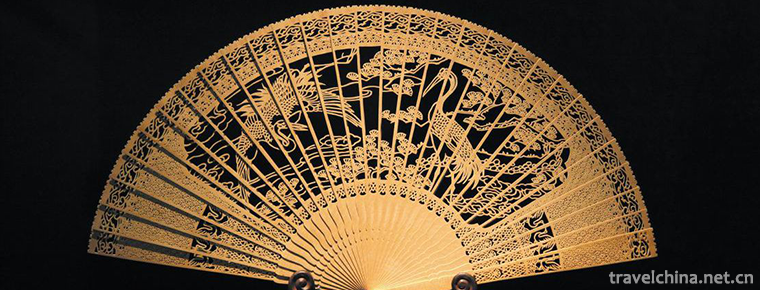Hunan Forest Botanical Garden
Hunan Forest Botanical Garden
Hunan Forest Botanical Garden, also known as Tianjiling National Forest Park and Changsha Botanical Garden, was established in 1985 with the approval of Hunan Provincial People's Government and is under the jurisdiction of Hunan Forestry Department.
Hunan Forest Botanical Garden is located in Yuhua District, Changsha City, capital of Hunan Province. It covers an area of 140 hectares and has a forest coverage of up to 90%. More than 3,200 varieties of plants belonging to 208 families, 900 genera and more than 4,000 species have been introduced, domesticated and domesticated in the park. 112 species of wildlife have been collected, treated and domesticated, including Cathaya argyrophylla, Davidia involucrata, Pheasant pheasant and other state-level protected plants and animals.
The park has a breeding base for the yellow-bellied pheasant, the first national publicity and Education Center for forest and wetland biodiversity conservation.
The botanical garden is densely forested and has a wide variety of flowers. The garden also holds flower exhibitions on a regular basis. Tulips and cherry blossoms can be seen. Every year in March and April, this is the place for citizens to enjoy cherry blossoms. There are pavilions and pavilions built in the park, which is also a relaxing place for Changsha citizens to step on the green road.
In January 2012, Hunan Forest Botanical Garden was awarded the National 4A Tourist Scenic Spot by the Announcement of the National Committee on Quality Grading of Tourist Scenic Spots (No. 1, 2012). On October 11, 2018, it was selected as the "National Practical Education Base for Primary and Secondary School Students".
Historical evolution
Hunan Forest Botanical Garden was established in 1985. It is a public welfare scientific research institution integrating scientific research, species preservation, popular science education and ecotourism. It belongs to Hunan Forestry Department.
In 1992, Tianjiling National Forest Park was approved by the former Ministry of Forestry, and in 1994, it was approved by the former Ministry of Forestry as Hunan Wildlife Rescue and Reproduction Center.
In September 1999, the Hunan Forestry Department, in cooperation with the World Wide Fund for Nature (WWF) and the Finnish Bureau of Forests and Parks, established the first national publicity and Education Centre for forest and wetland biodiversity conservation in Hunan Forest Botanical Garden, which is open to the public free of charge.
The logo of Hunan Forest Botanical Garden was established in 2009.
On September 27, 2012, the 31st meeting of the Standing Committee of the Eleventh People's Congress of Hunan Province adopted the Regulations on Hunan Botanical Gardens, which came into effect on January 1, 2013, and strengthened the planning, construction, protection and management of Hunan Botanical Gardens through legal means.
In Hunan Forest Botanical Garden, there is a plant tissue culture center and a breeding base for the yellow-bellied pheasant, a national first-class protected animal. By 2013, more than 100 yellow-bellied pheasants were bred.
geographical environment
geographical position
Hunan Forest Botanical Garden is located in Dongjing Town, Yuhua District, Changsha City, capital of Hunan Province. It is located in the core area of Yuhua District's transportation hub. It is surrounded by Xiangfu Road, Shaoshan Road, Wanjiali Road and Lidong Road and adjacent to Beijing-Zhuhai Expressway. Hunan Forest Botanical Garden is surrounded by more than ten bus lines running vertically and horizontally.
Topsoil
The Yuhua District passes through the Gutang River to the west of the lower Liuyang River. The northeast side is the low hilly area of granite, and the soil developed on the surface is mostly sandy soil, with steep mountain potential and many unrelated ridges. The East and southeast side are red rock hills, with an elevation of about 100 meters.
Climatic characteristics
Hunan Forest Botanical Garden belongs to subtropical monsoon humid climate, which is characterized by mild climate, abundant precipitation, simultaneous hot and rainy season and distinct seasons. The annual average temperature is 17.2 C and the annual average precipitation is 1361.6 mm. Summer and winter are long, spring and autumn are short. Spring temperature varies greatly, rainwater is plentiful in early summer, high temperature in late autumn is long, and cold winter is few. From late March to mid-May, warm and cold air suit each other, forming a continuous rainy, low-temperature and low-light weather. Since late May, the temperature has increased significantly. The average daily temperature in summer is about 85 days above 30 C, and the average annual temperature is about 30 days above 35 C. It is very hot and rainless in midsummer. After late September, the day is warmer, the night turns cooler, the precipitation decreases, and the low cloudiness increases day by day. From late November to mid-March of the second year, winter is the coldest in January, with an average monthly temperature of 4.4 degrees Celsius. Overwintering crops can survive safely and grow slowly.
plant resources
Hunan Forest Botanical Garden covers an area of 140 hectares, and the forest coverage rate reaches more than 90%. Ex-situ conservation of plant species was carried out through gene pools, special gardens and ecological forests. A total of 3200 species belonging to 208 families, 900 genera and rare plants, including Davidia involucrata and Cathaya argyrophylla, were successfully collected and conserved. There is a gene bank of Magnoliaceae species, 78 species of Magnoliaceae plants are conserved, and a conservation base of rare and endangered plants with the largest number of conserved species in the central subtropical zone has been established. 118 species of rare and endangered trees have been successfully conserved, including Activated Huperzia sequoiae, Pigeon Tree, Dinosaur Food Alsophila, Taxus chinensis var and Benzoin Changguo. According to the characteristics of different plants, cherry garden, Magnolia garden, shade plant rare botanical garden, Rhododendron garden, bamboo garden, tea garden, osmanthus garden, colored leaf botanical garden, medicinal botanical botanical garden, world famous flower garden and other botanical gardens have been built.
Purple Flowers Smile
Michelia purpurea is an evergreen flowering shrub or small tree species in Michelia of Magnoliaceae. It is the only purple flower species in Michelia of Hunan Province. The variations of flower color and leaf size were large. In 1990, a new bud mutation of ornamental value was found in a wild plant of Michelia purpurea in Botanical Garden. After years of observation, it was confirmed that the bud mutation was stable. Its flowers had unique color of dark purple, with silver-white edges on petals, large flowers, long flowering period, high fragrance, and had very high ornamental value. After 14 years of introduction, cultivation and propagation, a new variety, Mozi Hanyuan, was finally bred and identified by provincial scientific and technological achievements in early 2006.
Mozi smiles
Hunan Forest Botanical Garden has successfully bred and bred a new budding variety of the rare garden tree species Purple Flower Michelia: Purple Michelia, which has been applied in landscape greening.
- Liriodendron Chrysanthemum
Hunan Forest Botanical Garden has discovered a new variety of Loropetalum chinense var. coloratum C. Q. Huang, through a series of studies on introduction, domestication, screening and preliminary popularization and application of rare and endemic flower variety resources in Hunan forest area. Fourteen stable types of Loropetalum chinense var. coloratum C. Q. Huang have been selected and eight types have been selected for promotion. 。
Dove tree
Hunan Forest Botanical Garden has explored the main reasons why Davidia involucrata does not blossom and seldom blossom and bear fruit in low altitude areas, innovated the method of in-situ grafting cultivation and gradient introduction of Davidia involucrata, and the research results of grafting and artificial flower promotion of Davidia involucrata; selected new varieties of Ligustrum floreta; screened 97 rare, unique and ornamental wild flower plants in Hunan forest area, among which there are some. Forty-one species with good prospects for promotion have good ornamental value, and 47 species need to be actively promoted.
- Benzoin
Changiostyrax dolichocarpa (C.J.Qi) C.T. Chen is a Chinese endemic plant of the genus Benzoin in the family Benzoidae. It is a national second-class wild protection plant. It is only distributed in Shimen, Hunan, Sangzhi and Zigui Sixi, Hubei Province. The estimated total population is not more than 700.
Main attractions
Cherry Blossom Garden
Cherry Garden was built in 1987, covering an area of 200 mu. It collects and displays about 70 early and late cherry varieties, including Yoshino Cherry, Red Leaf Cherry, Vertical Cherry, Yunnan Cherry, Yuyihuang, Guanshan, Bazhong Red Island, Puxian Image, Tail Cherry, Mountain Cherry, Winter Cherry Blossom and so on. Among them, 2000 Yoshino Cherry in Yoshiga Prefecture, Japan, was presented in 1985. It has become the main ornamental species in the garden and is friendly to the Chinese and Japanese people. Witness. Cherry blossom and Cherry Blossom Lake constitute a wonderful landscape. The reasonable allocation of cherry early blossom varieties, middle blossom varieties and late blossom varieties makes the group ornamental period of Cherry Blossom extend to about 40 days.
Magnolia Garden
Magnolia Garden was built in 1995. It is divided into three parts. They are Sanxiang Scenic Garden, Magnoliaceae Plant Exhibition Area and Magnoliaceae Plant Germplasm Resource Gene Bank. They are collectively called Magnolia Garden, with an area of about 180 mu. It is divided into four regions: Manglietia, Magnolia, Michelia and Comprehensive. A total of 82 species of Magnoliaceae plants belonging to 7 genera have been collected and successfully conserved, including Lechang Michelia, hybrid Mandarin tree, sightseeing tree, Hainan Manglietia, Drunken Michelia, double Purple Magnolia and other excellent timber and landscape tree species.
In 2002, the Mulan Garden was transformed into a "Sanxiang Landscape Garden" which concentrates the natural and cultural landscapes of 14 regions in Hunan Province. It has become another scenic spot for developing ecological leisure.
Tea garden
Tea Garden is located on the Bank of Cherry Blossom Lake. It was built in 1992 and covers an area of about 45 mu. There are half-toothed black camellia, long-petaled short-column tea, Brown fruit tea and other Camellia species, as well as more than 30 camellia varieties such as Bachelor of Arts, Jinpan Litchi, Star Peach Peony and Zikui, with about 700 plants. Camellia is one of the ten famous flowers in China. It is bright, elegant, beautiful and auspicious. Its leaves are emerald green and flowers are huge. From late autumn to early summer, different varieties blossom in turn, mainly spring flowers, but some species blossom in winter when ice and snow.
National Rhododendron Garden
The National Rhododendron Garden (China Rhododendron Germplasm Resources Ex-situ Preservation Bank) was established in 2008 with an area of 450 mu, focusing on collecting and preserving 2000 rare species, provenances and populations with strong adaptability, great value, ornamental value and high value of exploitation and utilization, and 150 species and 300 varieties, so as to become an international advanced level of exotic conservation and genetic breeding of rare plants of the genus Rhododendron in China. Taiwan. At present, 88 species and 230 varieties have been introduced and preserved. Among them, Rhododendron tianmenshan, Rhododendron Zhangjiajie and Rhododendron Jianshang are introduced and cultivated for the first time in China.
World Famous Garden
The world famous garden is a hundred gardens which display many kinds of world famous flowers, covering 75 mu. Among them, the peony garden has 9 large color lines, 42 varieties and 4000 plants, covering an area of 6 mu, which is the southernmost place of Chinese ornamental peony planting. The precious varieties are yellow "Golden Pavilion" and "Yao Huang". Other regions display world famous flowers according to season and growth characteristics of flowers, bulbous flowers such as tulip, hyacinth and Narcissus in spring, potted lotus in summer, sunflower in autumn, seasonal grass varieties such as sage, chamomile and pansy, and more than 1000 varieties of flowers and nearly 3 million plants (pots) throughout the year.
Shade Botanical Garden
The Shade Botanical Garden, built in 2005, covers an area of 7.5 mu. It consists of five canes, a 140-meter-long ditch, two natural wells and a swamp. The road system in the garden is complete. Collect and display 680 shade plants, including Cinnamomum pubescens, Ginseng horseshoe, Phyllostachys tenuifolia, Octagon, Rhododendron chinensis, Michelia purple, Dugongshan, Huangchangshan, Acer alba, Stickle, Wuyao, Iris, Malus olivacea, Chiche, Stair, Lengshuihua, Echinaceae, Antagonia, Octagonitum, Mahonia, Epimedium, Capsicum, Capsicum, Capsicum Shade plants such as grass, various ferns, Acorus tatarinowii, Yanghe, ginger, Ficus gourd, various liverworts, Ligustrum chinensis, Longxu rattan, Sheep's foot nail, Five-fingered rattan, Serpentine grossedentata, delicious kiwifruit, etc.
Ornamental bamboo garden
The bamboo garden was built in 2008 and covers an area of 30 mu. A total of 154 ornamental bamboo plants were collected and displayed. There are pole-watching, leaf-viewing, shape-viewing and ornamental ground cover bamboo and other types, among which Shengyin bamboo, tortoise shell bamboo, Drum-knotted bamboo, Phyllostachys edulis, Phyllostachys aureus, Phyllostachys aureus, Phyllostachys sinensis, Phyllostachys edulis, Phyllostachys edulis, Phyllostachys sinensis, Phyllostachys edulis, Phyllostachy The stream runs through the whole garden. There are bamboo pavilions and corridors built on the hills and rivers.
Tourism Information
Address traffic
Ximen: 111 Botanical Garden Road, Yuhua District, Changsha City, Hunan Province
Beimen: Xiangfu East Road, Yuhua District, Changsha City, Hunan Province
Bus routes: Tourists can take bus routes 2, 7, 16, 17, 23, 102, 120, 123, 140, 141, 147, 152, 209, 210, 221, 230, 502, 702, 801, 802 and 806 to the provincial botanical garden station, and walk to the west gate of the botanical garden. It can also take bus No. 16, No. 370, No. 602 and No. 938 to the north of Botanical Garden to reach the scenic spot directly.
Ticket Price
Adults are 60 yuan per person and students are 30 yuan per person.
Children under 1.3 meters in height (including 1.3 meters) are exempted from tickets under the escort of their guardians.
Older people over 70 years old are exempted from tickets with valid certificates accompanied by their families, disabled persons, active soldiers, retired military cadres and family members of martyrs who hold valid certificates are exempted from tickets.






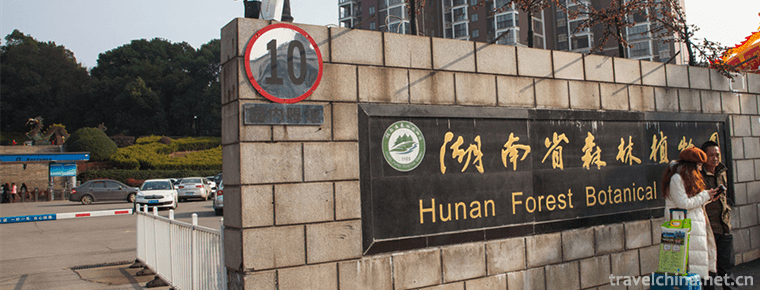
-
Shenyuan Scenic Spot Lu Xuns Hometown
Shenyuan is a national 5A scenic spot, located in Chunbolang, Yuecheng District, Shaoxing City. It is a famous garden in Song Dynasty. Shenyuan has a history of more than 800 years..
Views: 119 Time 2018-12-07 -
Japa Ma and Jami Ma
Japa Ma and Jami Ma are the local traditional folk literature in Lianghe County, Yunnan Province, and one of the national intangible cultural heritage..
Views: 194 Time 2018-12-15 -
Side wall ruins
The local people call it "Genghis Khan Wall", also known as "Jinjie Trench". It is the ancient Great Wall ruins spanning the left banner of Sunite, covering 100 square meters..
Views: 181 Time 2019-01-03 -
The First Sangzi in Jialing
The first Sangzi of Jialing is located in Peng'an County, Sichuan Province. Peng'an is the home of Sima Xiangru, a great poet of the Han Dynasty. It is located in the northeast of Sichuan .
Views: 121 Time 2019-01-21 -
Block door La shou men
Stopper Gate is one of the traditional Chinese boxing schools. It originated in Shaolin and was introduced to Tianjin in the early Qing Dynasty. It originated in Sichuan. It was the earliest southern .
Views: 213 Time 2019-05-10 -
Gentle boxing
Mianquan is a kind of uniform, soft, round, coherent, rigid and soft traditional boxing, which belongs to the intangible cultural heritage of Shanghai. Its movement is soft like cotton, the shape and .
Views: 130 Time 2019-06-04 -
Ningxia Xiaoqu
Ningxia Xiaoqu, a national intangible cultural heritage project, is a traditional rap art form with strong local characteristics..
Views: 220 Time 2019-06-08 -
Traditional Brewing Techniques of Brewing Wine
Chrysanthemum wine is a necessary drink for Chongyang Festival. It has a long history of brewing. Royal chrysanthemum liquor of Ming and Qing Dynasties was a kind of precious liquor created on the bas.
Views: 139 Time 2019-06-09 -
Shizhu Tujia Luoer Diao
Shizhu Tujia Luoer Diao originated from Shizhu Tujia Autonomous County, Chongqing. It is a folk song of Luoer tune, which is popular among the Han and Tujia nationalities in southeastern Chongqing. It.
Views: 282 Time 2019-06-15 -
Tauk Taohu
Tao Ketaohu (May 13, 1864-April 1922), also translated as "Tao Ketao", Fuer Zhijin, Mongolian, the former Banner of Guoerros in Zhelimu League, Mongolian subordinate aristocrat of Nezhazazak.
Views: 97 Time 2019-06-18 -
Fan making Techniques
Suzhou Fan is a special product of Suzhou. It is famous for its elegance, delicacy and artistic characteristics. Including folding fan, sandalwood fan and silk Palace fan, collectively known as ".
Views: 149 Time 2019-07-25 -
Beijing Technology and Business University
Beijing University of Industry and Commerce is a multi-disciplinary university in Beijing. It was approved by the Ministry of Education in June 1999 by the merger of Beijing Institute of Light Industr.
Views: 395 Time 2019-09-06

